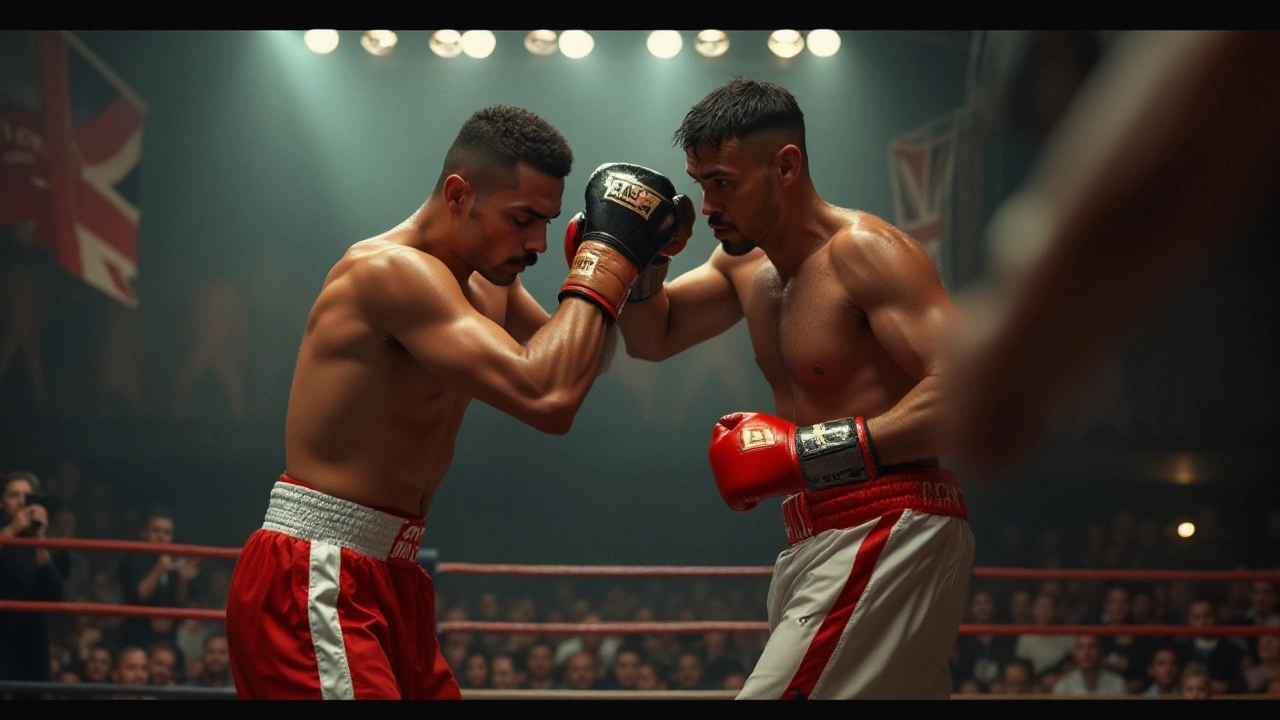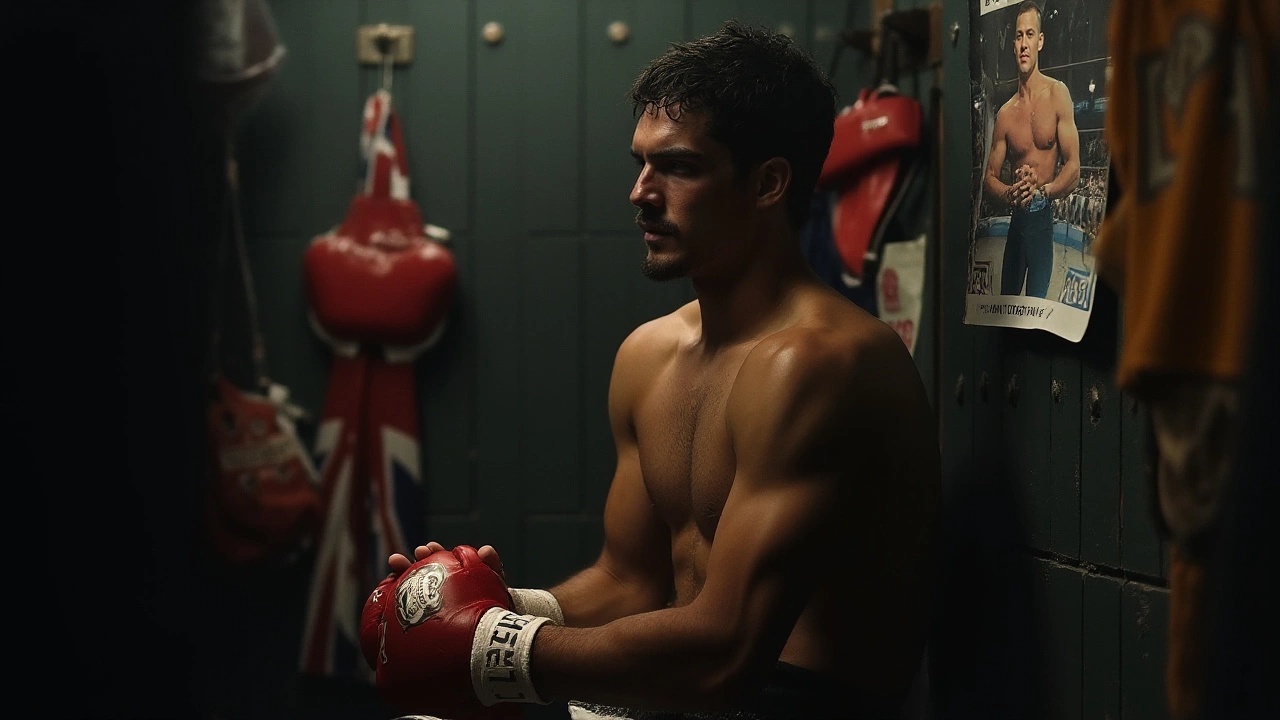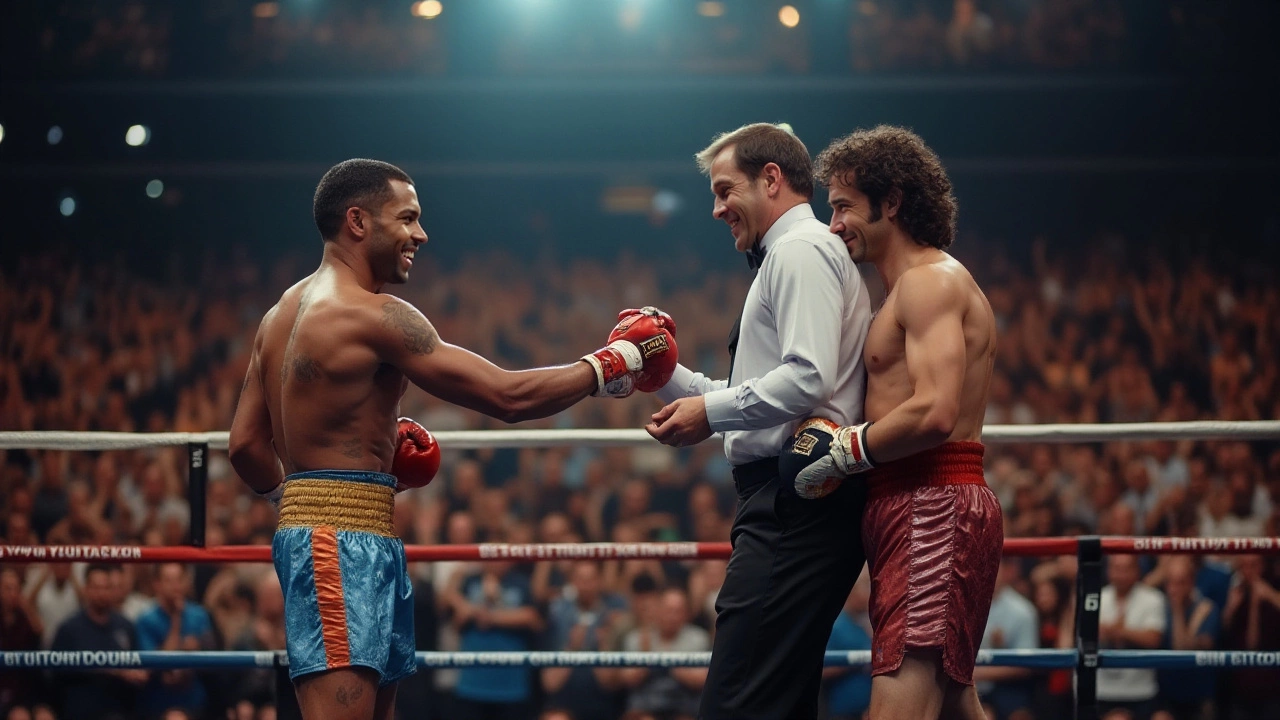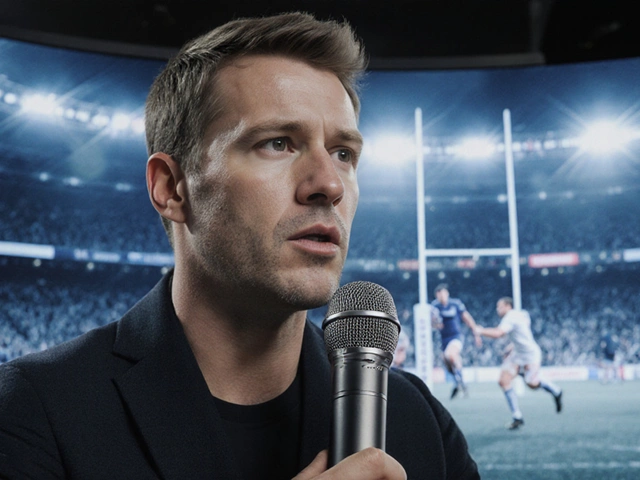
General Sports January 16, 2025
Understanding the Intricacies of a Boxing Match
Boxing matches have captivated audiences for generations, combining athleticism with strategy in an enduring display of human resilience. Sporting events like these are more than just physical contests; they are theaters of willpower and tactic, showcasing two fighters' mental and physical conditioning.
A key feature of any boxing match is the ring—a squared-off stage where these battles of endurance and skill unfold. Fighters engage in a skillful dance, landing precise punches while evading their opponent’s attacks, with the ultimate goal of securing victory through points or a knockout.
But what truly makes a boxing match special? Beyond the intense physical workout, there's a fascinating protocol in place: rounds, referees, and judges all contribute to regulating and determining the outcome of those thrilling bouts. For the fighter, preparation and strategy extends beyond merely stepping into the ring. Join us as we delve into the captivating world of boxing, where every match tells a unique story of passion and perseverance.
- The Basics of Boxing Matches
- Structure and Rules
- Role of Judges and Referees
- Training and Preparation
- Famous Boxing Matches
- What Makes Boxing Unique
The Basics of Boxing Matches
Stepping into the exciting universe of boxing is akin to embracing a legacy that dates back hundreds of years. From ancient Greek Olympics to the modern arenas filled with roaring fans, freedom and courage are the recurrent themes in these stories. But what exactly forms the backbone of these electrifying encounters in the ring? Essentially, a boxing match is a regulated combat sport where two individuals aim to outperform each other using strategy, skill, and strength. Each match consists of a series of rounds, usually lasting three minutes, where participants utilize their best offensive and defensive techniques.
The fight may conclude in several ways: a decision victory based on scoring, a knockout, or even a draw. Fighters are judged on their ability to land punches on their opponent, defend themselves, and exhibit ring generalship, all under the watchful eyes of a referee and the scorekeeping judges. Matches can vary depending on the type of event, such as professional versus amateur boxing, with professional bouts often lasting more rounds, sometimes up to twelve.
As with any structured competition, rules are critical. These are established by organizations such as the WBC, WBA, IBF, and WBO, ensuring fairness and safety. The rules dictate everything from the type of gloves used to the proper way to perform a punch. The central appeal of boxing matches lies in this strict adherence to rules, providing an organized display of athletic prowess.
"In the boxing ring, what counts is not how hard you hit, but how much you can handle getting hit and keep moving forward," once said by legendary boxer Rocky Balboa, capturing the essence of perseverance that defines the sport.
A vital aspect of these bouts is the role of weight classes. By categorizing fighters into classes like lightweight, middleweight, and heavyweight, the sport ensures fair fights among contestants of similar physical capabilities. This categorization is pivotal given the sport's intensive physical demands and varied stats among athletes.
Ultimately, there's no denying the gratitude fans hold for the boxing matches which provide exhilarating moments. Situations like the classic Ali vs. Frazier encounter in 1971, forever known as the "Fight of the Century," or the more recent epic bout between Fury and Wilder, are reminders of how impactful these events are. With every jab, dodge, and hook, boxing remains an inspiring test of human spirit.
Structure and Rules
A boxing match is a carefully orchestrated event, choreographed within the confines of a squared-off ring that measures between 16 to 20 feet on each side. This enclosed space sets the stage for the fighters, whose primary goal is to outmaneuver and outscore their opponent using precise, strategic punches. Boxing is a sport steeped in tradition, and it has adhered to a consistent set of rules established by governing bodies such as the World Boxing Association and the International Boxing Federation. These rules ensure fair play and the safety of the fighters, structuring the match into a series of rounds, typically lasting three minutes each, interspersed with one-minute rest periods. The number of rounds can vary, with professional fights usually extending over 12 rounds in major championship bouts, while amateur matches might only have three rounds.
In the boxing world, points are awarded based on several criteria: clean punches, effective aggressiveness, ring generalship, and defense. Three ringside judges score each round individually, and these scores are tallied to determine the winner, unless there is a knockout. The referee, an essential figure inside the ring, enforces the rules, ensuring fighters adhere to guidelines such as prohibiting hits below the belt or rabbit punches. The referee holds the authority to deduct points for infractions or stop the fight if a fighter is deemed incapable of continuing safely.
"Boxing is not about your feelings. It's about your performance." – Floyd Mayweather
The fighters, known for their intense physical conditioning, must remain within limits of their assigned weight class, an essential element ensuring fair competition. These classes range from lightweight to heavyweight, with each class defining a unique bracket of weight. Fighters undergo rigorous assessments during the weigh-in, typically held a day before the fight, ensuring compliance with their weight category. The entire event's structure acknowledges the importance of safety, incorporating procedures like mandatory medical checks before and after each bout.
Equipment and Attire
Apart from the ring regulations, boxing has a strict dress code ensuring fighters' safety and comfort during the match. Boxers wear padded gloves weighing between eight and twelve ounces, depending on the weight class, designed to protect both themselves and their opponents. Additionally, they don headgear in amateur bouts to minimize the risk of injury. Fighters don trunks and mouthguards, essential components of their combat attire. The hand wraps, used beneath gloves, are meticulously tied, providing extra protection to prevent injuries and ensure stability.
| Element | Specification |
|---|---|
| Ring Size | 16 to 20 feet |
| Round Duration | 3 minutes |
| Rest Between Rounds | 1 minute |
| Glove Weight | 8 to 12 ounces |
| Weight Classes | Lightweight, Heavyweight, etc. |
While the structural components and rules of a boxing match are designed to ensure a fair and safe environment, the atmosphere of the match remains charged with anticipation and excitement. Each action is scrutinized, judged, and ultimately woven into the rich tapestry of boxing history, creating narratives that resonate with audiences across generations. Understanding these nuances offers a new dimension to appreciating the sport, revealing the complex dance between grit, guile, and governance.

Role of Judges and Referees
In the dynamic world of boxing matches, judges and referees play crucial roles that often go unnoticed by the casual observer. Their responsibilities extend far beyond merely observing the fighters; they are the guardians of fairness and safety inside the ring. The referee, stationed prominently inside the squared ring, bears the brunt of this duty, ensuring that the combatants adhere to the prescribed rules that govern the sport. As the primary authority in the ring, the referee has the power to stop the fight to protect a fighter, issue warnings, or disqualify a participant if necessary. Their keen eyes must remain unwaveringly alert to detect fouls such as low blows or illegal maneuvers, thereby maintaining the integrity of the contest.
Outside the ring, the judges have an equally vital task: they are responsible for scoring each round independently of one another. Traditionally, in professional fights, three judges are entrusted with this responsibility. Using the 10-point must system, each judge awards ten points to the winner of the round and a lesser score to the opponent, barring any knockdowns or penalties. Their collective scores come together at the end of the bout to declare a victor, if no knockout occurs. It's a system that requires not only thorough knowledge of the sport but also an understanding of subtle nuances like technique, accuracy, and effective aggression.
"The judges and referees are the backbone of boxing, ensuring that every match remains true to the sport's spirit and standards," states renowned boxing analyst, Teddy Atlas. "Their judgment and fair play matter just as much as the punches exchanged by the fighters."
A critical aspect of any boxing match is the seamless coordination between judges and referees, who must remain impartial and precise. Their decisions can often stir public debates, highlighting the intense scrutiny such roles endure. Despite the pressure, these officials are driven by a passion for the sport and an unwavering commitment to uphold its globular standards. The unmistakable tension between a fighter's ambition and the guiding hands of the referees and judges adds profound depth to the spectacle of boxing, showcasing the delicate balance between human capability and the rules governing it.
Training and Preparation
In the world of boxing, proper training and preparation are crucial to succeed in the ring. This process is both a science and an art, demanding dedication, discipline, and resilience from an athlete. Initially, training camps are strategically set up, usually spanning 8 to 12 weeks. The regime is not just about intense physical condition but also strategic planning tailored to the specific opponent. Every fighter works closely with a team, including trainers, nutritionists, and conditioning coaches, all playing vital roles. Nutrition forms the backbone of a boxing regime, with carefully calculated diets that ensure the fighter is agile yet powerful, often involving a mix of high protein and carb-management techniques.
A typical day in a boxer's life is rigorous, often beginning at dawn with long runs to build stamina and oxygen capacity. Their routine is varied to ensure comprehensive muscle-building and agility drills, like sparring sessions, which are critical in improving a fighter's technique and timing. Sparring allows boxers to experience realistic fight conditions, enabling them to practice new tactics without the fear of consequence. As the saying goes, "The more you sweat in training, the less you bleed in battle." That wisdom underscores the importance of these preparations.
Moreover, mental preparation is just as essential as physical training. Many fighters implement mental visualization techniques, where they picture themselves countering blows and seizing victory in the ring. This mental rehearsal bolsters confidence and focus, hone skills beyond physical capacities. In a reflective piece on preparation, the legendary Muhammad Ali once said,
"I hated every minute of training, but I said, 'Don't quit. Suffer now and live the rest of your life as a champion.'"Such quotes embody the dedication needed to excel in boxing.
Statistics support the importance of proper training, with data showing fighters who train under structured regimens are 30% less likely to suffer injuries than their less prepared counterparts. Embracing a multi-faceted training strategy ensures a fighter's readiness from all fronts. Strength is built in the weight room, stamina on the track, strategies in the ring, and resilience in the mind. Together, these elements create a formidable boxer ready to face any challenge within the squared canvas of the boxing ring.

Famous Boxing Matches
Boxing's allure extends beyond just the sport's physical demands and its ancient roots. The spectacles it offers can often define entire eras. A boxing ring has been the stage for some of the most memorable and intriguing tales in sports history, each match carrying its own unique narrative woven with skill, rivalries, and sometimes even profound cultural significance. One such match was the iconic bout between Muhammad Ali and Joe Frazier, popularly referred to as the 'Fight of the Century'. This clash of titans on March 8, 1971, at Madison Square Garden, not only decided who was the ultimate heavyweight champion but also symbolized the turbulent socio-political climate of the era. Ali's outspokenness outside the ring met Frazier’s relentless inward determination, creating a storyline that mesmerized audiences beyond just those who love boxing. Ali's strategy was to dance around Frazier, employing his signature 'float like a butterfly, sting like a bee' approach, while Frazier's answer came in the form of unwavering pressure and his devastating left hook.
Another noted bout that left an indelible mark on both boxing and pop culture was the 1997 'Bite Fight' between Mike Tyson and Evander Holyfield. On June 28, the world watched as Tyson, known for his ferocity and early knockouts, faced off against Holyfield in their infamous rematch. The fight entered legend not because of what was achieved within the rules of boxing but through an act of desperation and controversy, as Tyson bit Holyfield's ear. This shocking moment transcended the sport, sparking conversations on the nature of competitiveness and sportsmanship. It also raised questions about what a boxer might resort to when cornered against overwhelming odds. In a videotaped apology following the incident, Tyson famously reflected, "In the heat of battle, I lost my composure and behaved like a 10-year-old. I don't have any excuses."
"Inches create champions." — Mike Tyson
Beyond the drama and personality clashes, boxing has also offered moments of pure athletic achievement and perseverance. One example is the 1981 'Showdown' between "Sugar" Ray Leonard and Thomas Hearns, which is still celebrated for Leonard's tactical brilliance and his stunning comeback victory. The bout, which unified boxing's welterweight division, demonstrated Leonard's incredible adaptability and strategic prowess. Many doubted Leonard's ability to withstand Hearns' powerful onslaught, but he demonstrated resilience, being colder and calculating, unleashing a furious onslaught in the later rounds to secure a knock-out victory. Matches like these, where strategy meets heart, continue to embody what makes the sport compelling.
There are numerous other matches, each contributing to the sport's rich tapestry. Whether it’s Mayweather vs. Pacquiao, dubbed the 'Fight of the Century' in 2015, embodying the match-up between modern legends, or the tenacity of 2020's Tyson Fury vs. Deontay Wilder, where Fury displayed everything from skill to psychological mastery, the allure of boxing remains timeless. Each bout is more than just a fight—it’s a concoction of storytelling and choreography played out in front of millions. These famous matches provide a living narrative of human tenacity, skill, and the pursuit of greatness within a confined ring.
What Makes Boxing Unique
The enduring appeal of boxing lies in its blend of physicality and artistry, making each match a pulse-pounding spectacle. Unlike many other sports, boxing places immense emphasis on both individual skill and the intense one-on-one competition that exists within the confines of the ring. At its core, a boxing match is a compelling display of strategy intertwined with raw power, where athletes must master the delicate balance between offense and defense. Few sports require the level of mental acuity to read an opponent's moves, exploit weaknesses, and execute flawless combinations as boxing does. This combination of mental and physical challenge is part of what sets boxing apart in the realm of combat sports.
Another unique aspect of boxing is its deeply entrenched history and cultural impact. Throughout time, boxing has seen legends rise such as Muhammad Ali, Mike Tyson, and more recently, Floyd Mayweather, each bringing their own style and personality to the sport. These fighters became cultural icons, transcending the sport and influencing generations. The narrative between two fighters often captivates audiences, extending beyond mere physical prowess.
"Float like a butterfly, sting like a bee," said the great Ali, encapsulating the fluidity and precision required in this sport, underlining its revered tactical sophistication.Such quotes have become synonymous with the mental edge that boxing champions possess.
The training regimen also uniquely defines boxing. The arduous routines not only build stamina and strength but demand dedication and discipline. Boxing training pushes a fighter to the limits, incorporating digital sparring partners, traditional shadow boxing, and, of course, the customary roadwork that sharpens cardiovascular endurance. Modern techniques have also entered the fray, with many fighters now utilizing data analytics to perfect their punching techniques and optimize their bouts. Boxers often spend years refining their craft before setting foot in the ring, each step of preparation critical to prevailing in high-stress situations.
Integral to boxing's uniqueness is the structured format of the match itself. Divided into rounds, this setup ensures sustained suspense, as both fighters are given the chance to adapt their strategies mid-fight. The scoring system, scrutinized by judges, emphasizes precision, technique, and dominance throughout the fight, and a significant knockout still remains one of the sport's most thrilling elements. Each bout is a puzzle of endurance and strategy, where decisions can hinge on the smallest moment. This journey from the opening bell to the final verdict creates an emotional roller coaster for both fighters and fans alike.
Indeed, statistics often highlight what makes boxing compelling. An analysis of championship fights reveals that roughly 70% are determined by decision and approximately 30% end in a knockout, showcasing the sport's unpredictable nature. Even fans are often split on which outcomes they prefer, making each encounter a fresh and exhilarating experience. A formidable fighter can turn the tide in a fraction of a second, with every punch potentially altering the course of the narrative.
Therefore, it’s this cocktail of storied tradition, individual heroism, tactical intricacy, and dramatic intensity that makes boxing one of the most unique sports in existence. It demands respect from its athletes and offers profound respect in return, rewarding those who dedicate their lives to the discipline and craft of the sport with a special place in sports history.




